Facing Goya, more than daring, is suicide. The Aragonese master is a miura that is impossible to fight without coming out unscathed. The artist Lita CabellutAragonese like Goya (she was born in Sariñena in 1961; he, in Fuendetodos in 1746), took the bull by the horns and decided, “with humility and admiration”, to confront the ‘Disparates’ and do an “artistic reading” of they. Unfinished and made between 1815 and 1823, it is Goya’s series of engravings most enigmatic and difficult dand understand. He made it shortly before his exile in Bordeaux, when the Inquisition was on his trail.
The Queen observes a sculpture by Lita Cabellut, together with the artist, Ernest Urtasun, Tomás Marco and Eloy Martínez de la Pera
There have been artists who have dared to work with the ‘Caprichos’ (Dali), ‘Bullfighting’ (Picasso) or the ‘Disasters of War’ (the Chapmans). The same has not happened with ‘Disparates’, which Cabellut feels are “the most primitivist, disruptive, cryptic and radical creations of Goya’s work and, at the same time, I understand them as the most contemporary narratives and those that best reflect the shortcomings of today’s society. Confronting Goya, he confesses, “produced me an indescribable vertigo. Was terrified. It was a great responsibility. When you climb a mountain and are on the edge of a cliff, you can fall into the void, but sometimes danger is the only salvation. Goya It has transformed me as a woman, as an artist and as a person.».
The Royal Academy of Fine Arts of San Fernando It keeps among its treasures the four series of Goya engravings, in addition to all the plates (except four), which have been restored and today look splendid in the Goya Cabinet. There is, therefore, no better venue to host the ‘Goya X Lita Cabellut’ exhibition. The Nonsense. Miserable humanity, it’s your fault’, inaugurated this Tuesday by Queen Letiziaaccompanied by the Minister of Culture, Ernest Urtasunand that will remain open until January 26, 2025. Whims or nonsense of destiny, in the middle of the tsunami Errejón that is sweeping Sumar these days, Urtasun was able to see first-hand how Fuendetodos, two centuries ago, already warned (he did) of violence and abuse against womenthe lack of freedom and the fear thereof, prostitution and unwanted eroticism, among other base passions of the human condition: selfishness, brutality, ignorance, marginalization…
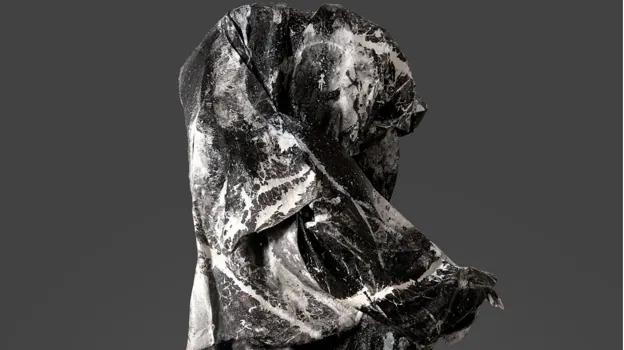
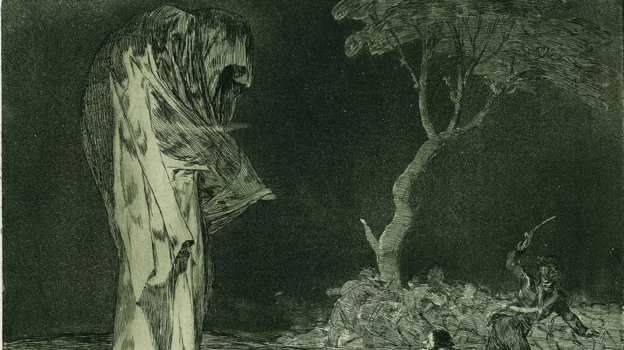
Lita Cabellut’s new artistic project has its origins in a catastrophe: the flood who suffered four years ago Bardón bookstoreAli Baba’s cave for bibliophiles in Madrid. Among its jewels, a second edition of Goya’s ‘Disparates’ (1875-1877), which Cabellut acquired. «The ‘Nonsense’ came into my life. I don’t believe in coincidences. Things happen because you take one path and not another. This folder, which survived a shipwreck, had to fall into my hands,” says the artist. It refers to a green folder, locked in a display case at the beginning of the exhibition, which contained Goya’s engravings and which still preserves the firefighter’s footprints who rescued them from the water.
The artist took them to her studio in The Hague, which was “intoxicated” by Goyajust like herself. “In reality, it was always in his painting,” points out Eloy Martínez de la Pera, curator of the exhibition. He notes that Cabellut shares with the teacher “the same drive, the same passion for the imperfect society in which they lived. They talk about the best and the worst of human beings: mistreatment of women, sexual slavery, sectarianism in the world of politics; “They criticize the established powers, but they also speak of goodness, hope, beauty and truth.”
Cabellut feels great admiration for whom he considers his teacher and «the bravest journalist in this country»: «I connected with Goya from the first moment. It has always been with me. We both left Spain. When I realized I wanted to be an artist, I knew I had to be how he saw life: observing and going out into the streets, going through the skin to reach the muscle. He witnessed the greatest atrocities, he went to his workshop and left testimony of it, without judging, even if it hurt him. “I believed in humanity.”
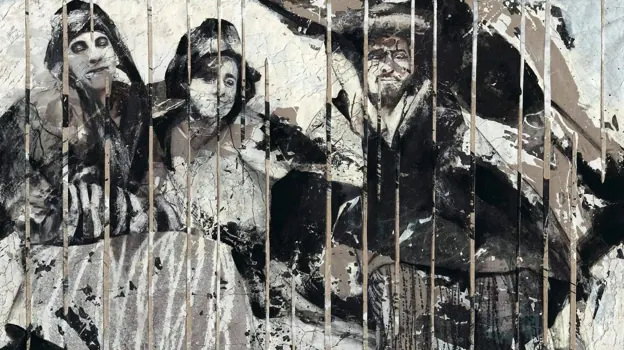
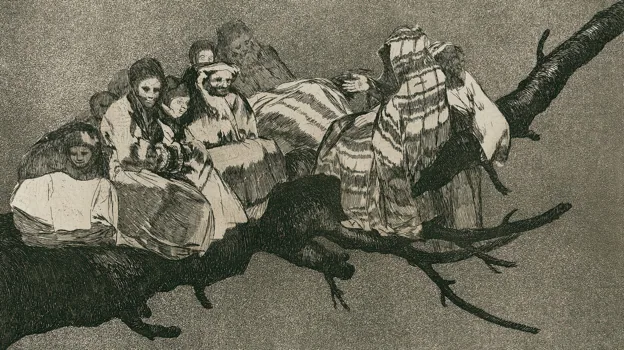
He arrived in the Netherlands at the age of 19 thanks to a scholarship at the Gerrit Rietveld Academy and stayed in the country. She is one of the most sought-after creators in our country. Chosen artist of the Netherlands in 2021 and ‘honoris causa’ by the University of Barcelona, it is her second exhibition this year in Madrid. Between May and June he exhibited at the Opera Gallery. In this new project, Lita Cabellut’s colorful canvases have given way to a symphony of black, white and gray: “Goya has taught me that black people are not black, and all the nuances that white people contain.” Goya’s ‘Nonsense’ hangs next to twenty works by Cabellut: large-format canvases and sculptures and deformed heads in attics. From Goya’s engravings he chooses elements that he finds moving, even though they are barely visible.
«There is no textile that resists Goya’s passion», says Cabellut. He has used twill, a difficult material that Goya used, and there is even a sculpture made with tarlatana, a fabric that is used to remove excess ink with which the etching plates are impregnated. At the end of the exhibition, ‘Landscape full of caresses’, a white painting (symbolizing that, despite everything, there is light and hope) and a film that shows his creative process. Lita Cabellut, in its purest form, in full delirium.
«Goya gave me everything, my education on human conscience, on ethics; taught me to recognize chiaroscuro in which we live –he explains–. Goya has taken away my fear of the dark. He taught me to look ghosts in the face and make them small. Also to love them, because they are ours. For Cabellut, Goya’s ‘Disparates’ “maybe the most raw and intensefull of hope and love throughout her career. It is a beautiful farewell letter, a tribute to the human being».
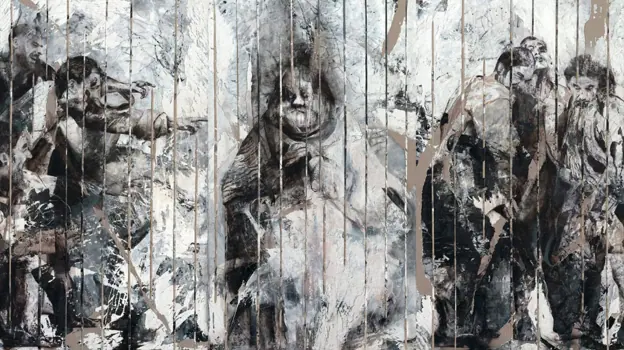
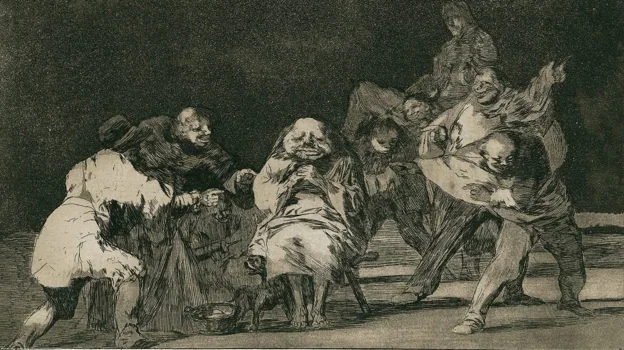
Cabellut understands contemporary art as a continuation of the art of the past: “We do not invent, we do not create anything new.” He pays tribute in his work to the great masters he has always admired: Velázquez, Rembrandt, Vermeer, Goya, Rothkeither… “There is a lot of Rothko here, even if you don’t see it,” he comments. At the age of 13, on a visit to the Prado with her adoptive family, this gypsy artist – abandoned by her mother at the age of 3 and who went to an orphanage – had a revelation when contemplating ‘The Three Graces’ by Rubens. I would be an artist. And so it was.
Although she has lived in The Hague for many years, Lita Cabellut feels “very Spanish; “It is a very rich country.” The black paintings that that girl saw in the Prado “stayed for a lifetime. “I never let go of Goya.” Why ‘Nonsense’ and not his black paintings? «We are living in nonsense. It’s what I had to do».
#Lita #Cabellut #Goya #taught #ghosts #face


